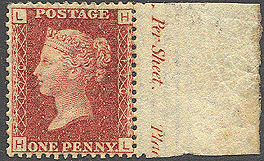 |
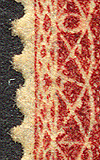 |
|
|
|
This was the final issue of the Penny Red line-engraved postage stamp. It would be replaced in 1880 by surface printed technology. Issued in 1864, nearly a quarter century after the 1840 Penny Black, great strides were made in the production of line-engraved stamps. Much of what was done by hand, an invitation to error, was now done mechanically. The transfer roller was applied mechanically rather than guided by hand, and as a result there are very few constant varieties to be found on this issue. As members of the Great Britain Philatelic Society have demonstrated, there is still rewards to be yielded through careful research in regards to repairs, but the characteristics of the earlier issues, such as major re-entries, shifted transfers, double letters, are no more. Also, it was decided for this issue to place the plate numbers right on the stamps, vertically on each side of the stamp within the lattice work design (see the enlargement below). Examples below provide evidence that the perforation process still left room for improvement. Perforation errors and missing pins are not uncommon on this issue. Another type of error which is persistent during this issue is the watermark error. The "MA- ML TA-TL" watermark error, and inverted watermarks can be found on this issue.
The fact that this issue provides little in the way of constant varieties and has the plate numbers located on the stamps pretty much limits the possibility of "fly specking or a need for "plating" the stamps. Therefore, what then is the challenge of this issue and what would be a rewarding approach to their study? Since these stamps were printed in greater quantities than there predecessors, and are less expensive to acquire in mint multiples, one might put together a beautiful collection of plate blocks or a complete set of beautifully centered mint singles. The 1864 Penny Red is also fertile ground for postal history at prices more affordable in many cases than the earlier issues. One area i find particularly interesting is collecting the tremendous range of different types of postmarks which were in use at the time. Since there is not much ground to cover in terms of varieties on this issue I will instead supply examples of the different types of postmarks which can be found on this stamp.
The following Plates were issued: 71-74, 76-125,
127, 129-225. Plate 77 is extremely rare and Plate 225 is scarce.
Click
here for a Table of Basic Information for each plate.
 |
 |
|
|
|
Errors
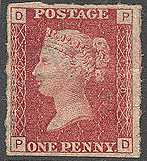 |
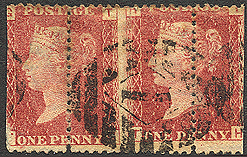 |
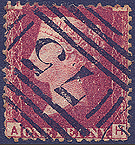 |
|
|
|
|
Postal History
Click the below images for enlargements
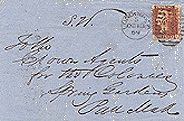 |
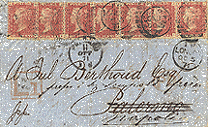 |
|
|
|